A few months back I helped Alex D’Arcy run her booth at the Toronto Outdoor Art Exhibition. As visitors wandered into her tent, I used the same phrase to introduce her work: “Alex paints using just five colours—two reds, two blues and a yellow—and she’ll spend two to three hours in her studio just mixing her colours before she even starts to paint.”
Everyone’s reaction was identical; the same automatic half-nod, the same non-registering look, and then, slowly, as the words started to collide with the paintings on the walls, the same immediate, “Wait—just five colours?”
I understood their reaction, because it had been mine too.
When Alex first talked about her works, hers had only been a passing comment—but very soon it struck me. In her tent we were surrounded by large-scale canvases vibrating with colour—with every colour—and yet I was really only seeing five?
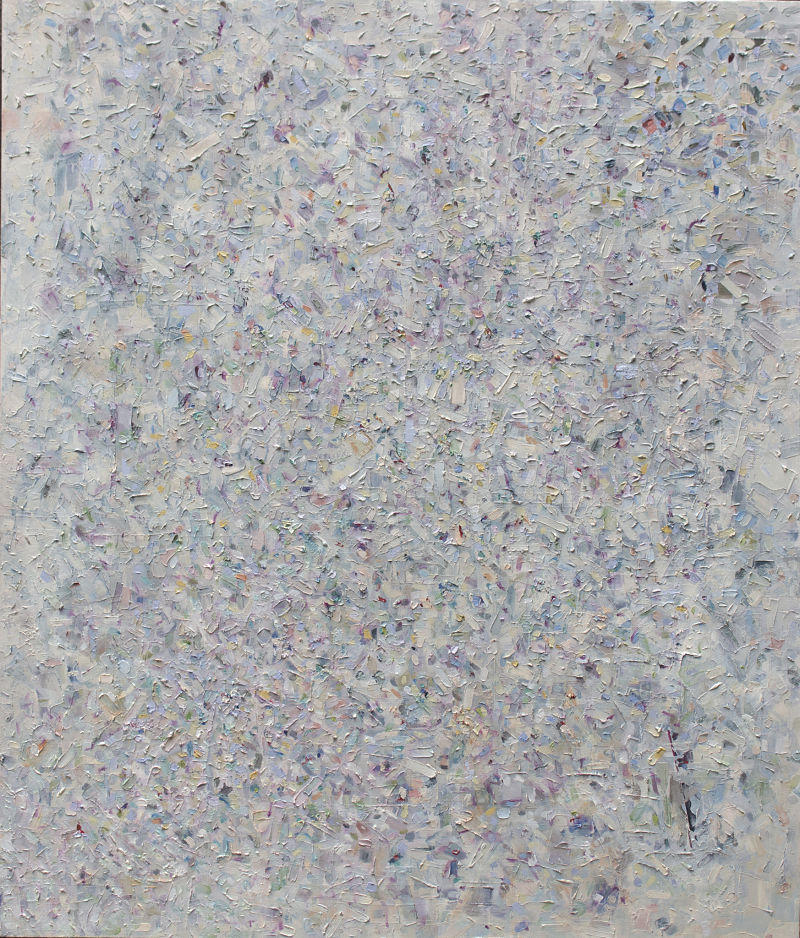 Alex D’Arcy, Static White, 2014, , oil on canvas, 34 x 40 inches. Courtesy of the artist.
Alex D’Arcy, Static White, 2014, , oil on canvas, 34 x 40 inches. Courtesy of the artist.
“Well, there are only three primary colours,” Alex reminded me, “and for me, choosing to paint with just a few of them—plus white, of course— is a way of setting limits.”
I nodded at her last remark, but it was a comment I didn’t fully understand; to me, a reduced palette seemed just one more element to celebrate in her work—and a surprising starting point for conversation.
Yet only a couple of weeks later, while interviewing Canadian-born, Detroit-based artist Lilian Crum, a similar comment was made which sparked an interesting connection—causing Alex’s comment to click—and a new conversation to take shape.
Lilian explained how early on in her career her initial goal had been to develop her own unique method of mark-making. In her search for what felt right she had experimented with a number of different materials and eventually found her voice using 100% cotton paper, Sumi ink and a calligraphy pen—three simple elements—and she kept it at that.
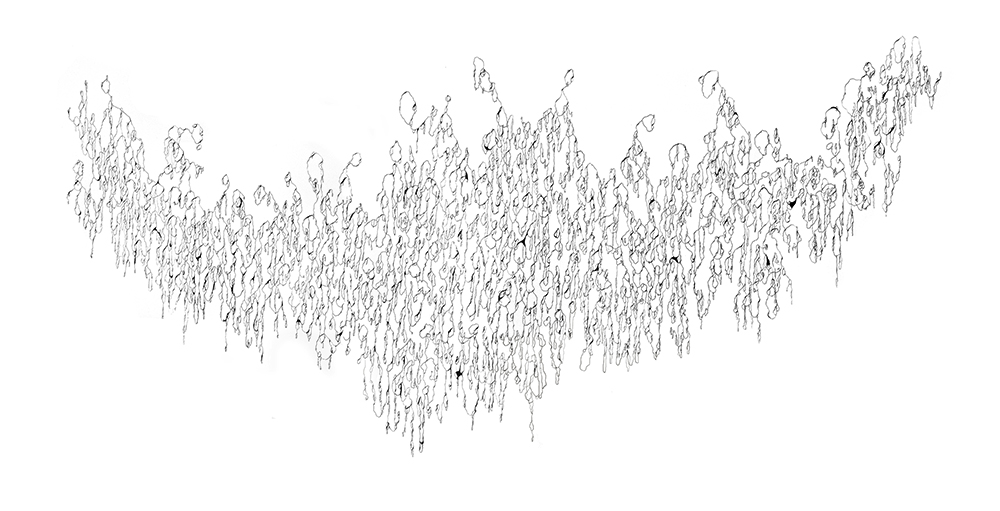 Lilian Crum, Untitled XV, 2013, , sumi ink on paper, 28 x 40 inches. Courtesy of the artist.
Lilian Crum, Untitled XV, 2013, , sumi ink on paper, 28 x 40 inches. Courtesy of the artist.
“So why was choosing just three so important?”—I wanted to understand. “Because for me,” Lilian explained, “it was a way of setting limits.”
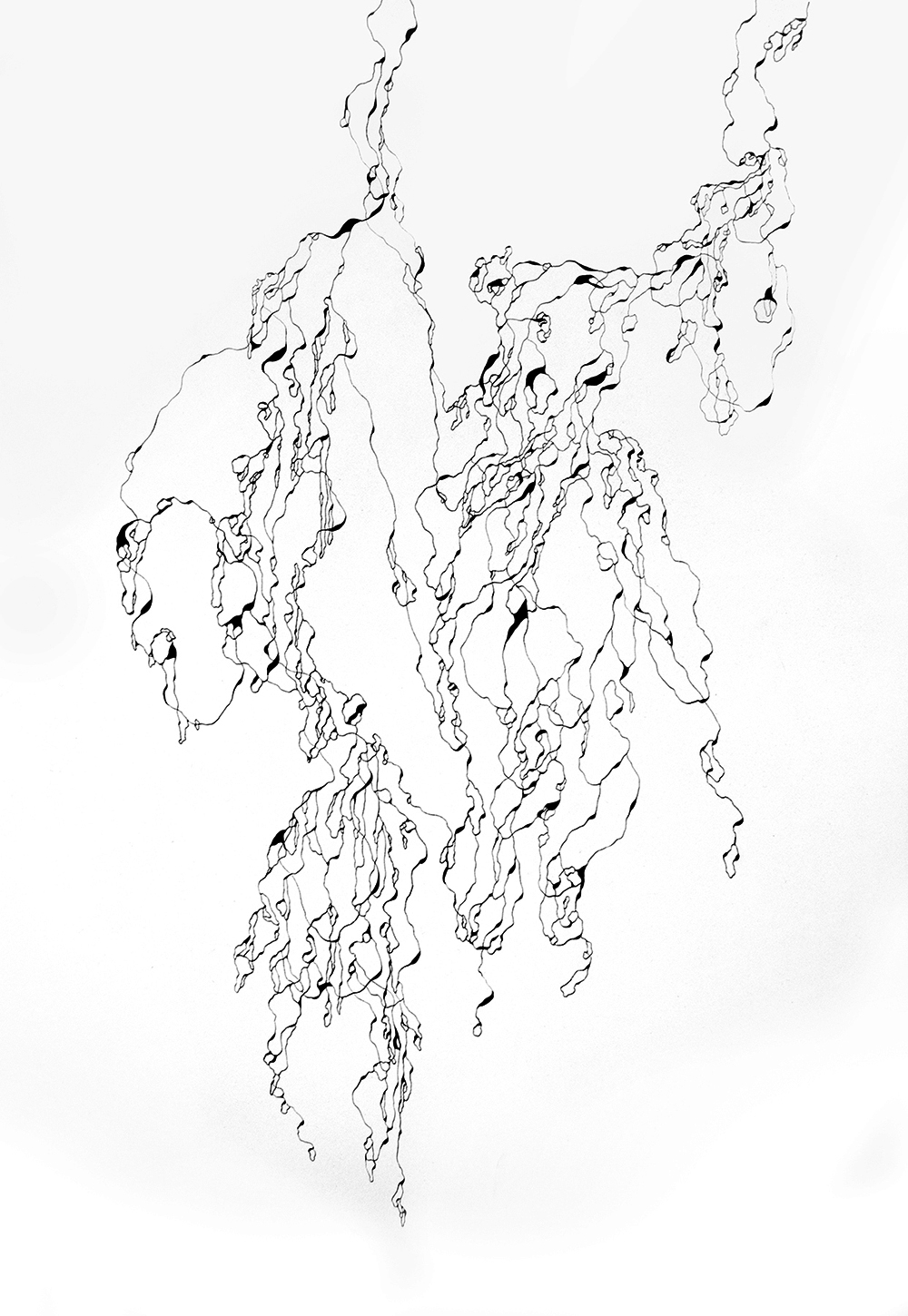 Lilian Crum, Marionettes, 2014, sumi ink on paper, 18 x 24 inches. Courtesy of the artist.
Lilian Crum, Marionettes, 2014, sumi ink on paper, 18 x 24 inches. Courtesy of the artist.
Apparently at the start of her career Lilian faced limitless possibilities. She could, quite literally, take her practice in any direction, using any and every material available. Yet instead of propelling her art-making, the prospect of limitless possibilities paralyzed her.
Sensing freedom in structure, Lilian began by setting some ground rules. In many ways, it could be said that her initial approach was quite unconventional, as she worked hard to put in place strict parameters that would serve to delineate the boundaries of her exploration.
And that’s where the paradox emerges: instead of limiting her practice—as one would imagine—choosing to set parameters actually served to facilitate it, for in working within a finite structure, Lilian was able to set herself free—free to explore her creativity and free to develop her own sense of direction, without the pressure of having left things untried.
 Lilian Crum, Untitled II, 2012, sumi ink on paper, 45 x 65 inches. Courtesy of the artist.
Lilian Crum, Untitled II, 2012, sumi ink on paper, 45 x 65 inches. Courtesy of the artist.
Using just three materials—paper, ink and a calligraphy pen— Lilian is able to develop the full potential of each, and to mine the depth of her mark-making through them. Without the noise of superfluity, her drawings shine with an intrinsic authenticity, and it is precisely because of their reduced simplicity that every element of her work is so fully present.
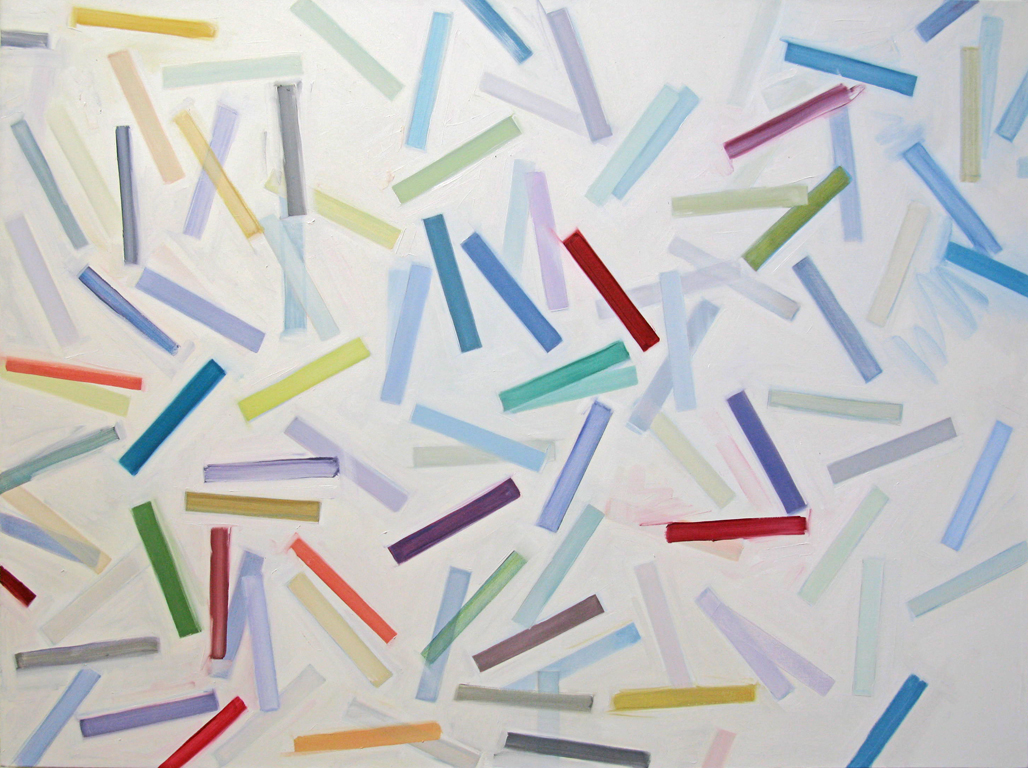 Alex D’Arcy, Horizon, 2014, oil on canvas, 42 x 60”. Courtesy of the artist.
Alex D’Arcy, Horizon, 2014, oil on canvas, 42 x 60”. Courtesy of the artist.
The same is true of Alex’s oeuvre.
Using just two reds, two blues and a yellow as a base, Alex must spend hours in her studio just mixing her colours—sometimes up to a hundred and fifty at a time. Yet as her densely layered canvases show, the limitless range she is able to produce far exceeds her original five.
In fact, even the daily exercise of mixing her palette is a fruit of her limitations; developing her colours in series, Alex utilizes the lengthy routine as a way to sharpen her eye, training her mind to recognize infinitely subtle nuances, like when a blue becomes a green and when a yellow turns almost imperceptibly to orange.
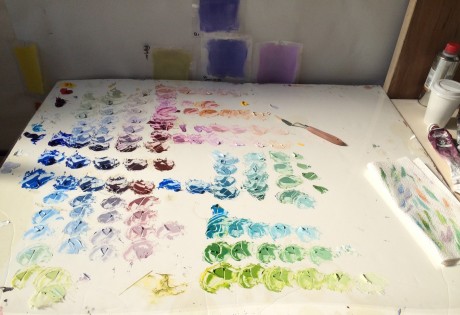 D’Arcy’s palette shows how the artist works to develop her colours in series, maintaining equal increments between each gradation. Photo: Love Art Fair.
D’Arcy’s palette shows how the artist works to develop her colours in series, maintaining equal increments between each gradation. Photo: Love Art Fair.
“I use just five colours because there is so much range within that,” she explained back in July, “you come to find that there’s a lot of expansion within the contraction”.
A lot of expansion within the contraction—that is exactly the limitless freedom that Lilian’s drawings show.
A lot of expansion within the contraction—I understand, and I nod my head in amazement.
Veronica Scarpati
Note: Lilian Crum’s works will be featured in Drawn: A Selection of Drawings by Contemporary Canadian Artists, presented by the AGO Art Rental & Sales Gallery in the Art Gallery of Ontario, Norma Ridley Members’ Lounge, October 20 – January 12, 2015. Exhibition curated by Elizabeth Petrova.
Alex D’Arcy is represented by Mayberry Fine Art. Examples of her work are on display at the AGO Art Rental & Sales Gallery.
